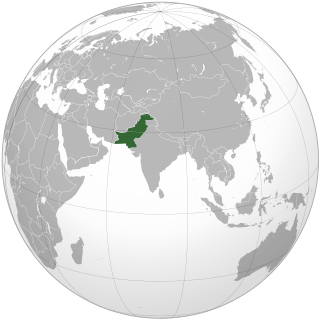This article needs additional citations for verification .(September 2020) |
| Location | |
|---|---|
| Country | Afghanistan |
| Continent | Asia |
| Type | closed |
| Access codes | |
| Country calling code | +93 |
| International call prefix | 00 |
| Trunk prefix | 0 |
This article needs additional citations for verification .(September 2020) |
| Location | |
|---|---|
| Country | Afghanistan |
| Continent | Asia |
| Type | closed |
| Access codes | |
| Country calling code | +93 |
| International call prefix | 00 |
| Trunk prefix | 0 |
Area codes in Afghanistan are two digits long. It is common to write phone numbers as (0xx) yyy-yyyy, where xx is the area code. The 0 prefix is for long-distance dialing from within the country. International callers should dial +93 xx yyyyyyy.
Area codes for common cities are:
There are six mobile phone companies currently operating in Afghanistan. Mobile phone numbers are written as (0xx yyy-yyyy), where xx is the code. The 0 prefix is for dialing from within the country. International callers should dial +93 xx yyy yyyy.
Some of the mobile phone codes are:
A toll-free telephone number or freephone number is a telephone number that is billed for all arriving calls. For the calling party, a call to a toll-free number from a landline is free of charge. A toll-free number is identified by a dialing prefix similar to an area code. The specific service access varies by country.
A telephone numbering plan is a type of numbering scheme used in telecommunication to assign telephone numbers to subscriber telephones or other telephony endpoints. Telephone numbers are the addresses of participants in a telephone network, reachable by a system of destination code routing. Telephone numbering plans are defined in each of the administrative regions of the public switched telephone network (PSTN) and in private telephone networks.

Telephone numbers in the United Kingdom are administered by the Office of Communications (Ofcom). For this purpose, Ofcom established a telephone numbering plan, known as the National Telephone Numbering Plan, which is the system for assigning telephone numbers to subscriber stations.

The Australian telephone numbering plan describes the allocation of phone numbers in Australia. It has changed many times, the most recent major reorganisation by the Australian Communications & Media Authority taking place between 1994 and 1998.

The French telephone numbering plan is used in Metropolitan France, French overseas departments and some overseas collectivities.
Telephone numbers in Japan consist of an area code, an exchange number, and a subscriber number.
In Argentina, area codes are two, three, or four digits long. Local customer numbers are six to eight figures long. The total number of digits is ten, for example, phone number (11) 1234-5678 for Buenos Aires is made up of a 2-digit area code number and an 8-digit subscriber's number, while (383) 123-4567 would be an example of a Catamarca number.

Numbers on the Irish telephone numbering plan are regulated and assigned to operators by ComReg.
A trunk prefix is a digit sequence to be dialed before a telephone number to initiate a telephone call for the purpose of selecting an appropriate telecommunications circuit by which the call is to be routed.
Widespread UK telephone code misconceptions, in particular brought on by the Big Number Change in 2000, have been reported by regulator Ofcom since publication of a report it commissioned in 2004.

The dialling plan for mobile networks and new landline operators is closed; all subscriber numbers must be dialled in full. For landline numbers starting with 02, the dialling plan used to be open; the trunk digit and area code could be omitted if the caller was in the same area code as the callee. However, starting May 3, 2008, all landline numbers must be dialled in full.
Telephone numbers in South Korea are organized and assigned using the following scheme

Telephone numbers in the Philippines follow an open telephone numbering plan and an open dial plan. Both plans are regulated by the National Telecommunications Commission, an attached agency under the Department of Information and Communications Technology (DICT).

Telephone numbers in Pakistan are ten digits long. Landline numbers and mobile numbers have different structures. Geographically fixed landline are prefixed by an area code which varies in length depending on the significance of the place. Mobile numbers are prefixed (03) followed by a code indicating the telephone operator. The international country code for Pakistan is '+92'.
Slovenia received a new country code following the breakup of the Socialist Federal Republic of Yugoslavia in 1991. Additionally, the Ipko mobile phone company in Kosovo used the +386 country code.

A telephone number in Belgium is a sequence of nine or ten digits dialed on a telephone to make a call on the Belgian telephone network. Belgium is under a full number dialing plan, meaning that the full national number must be dialed for all calls, while it retains the trunk code, '0', for all national dialling.
National conventions for writing telephone numbers vary by country. While international standards exist in the form of recommendation E.123 by the sector ITU-T of the International Telecommunication Union (ITU), national telephone numbering plans define the format of telephone numbers assigned to telephones and similar communication endpoints.
Telephone numbers in the United Kingdom have a flexible structure that reflects their historical demands, starting from many independent companies through a nationalised near-monopoly, to a system that supports many different services, including cellular phones, which were not envisaged when the system was first built. Numbers evolved in a piecemeal fashion, with numbers initially allocated on an exchange-by-exchange basis for calls connected by manual operators. Subscriber numbers reflected demand in each area, with single digit telephone numbers in very rural areas and longer numbers in cities.